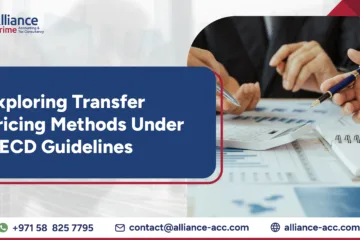In general, transfer pricing refers to the price agreed for transfer of goods, services and technology between related parties and connected persons. The UAE CT regime will have transfer pricing rules to ensure that the price of a transaction is not influenced by the relationship between the parties involved. In order to achieve this outcome, the UAE will apply the internationally recognised “Arm’s Length” principle to transactions and arrangements between related parties and connected persons.
Arm’s length Principle (ALP) ALP in case of related parties and connected persons transactions to be determined as per internationally recognised transfer pricing methods (for example comparable uncontrolled price method, resale price method, cost plus method, comparable profits method & profit split method) or under different method (s) where specified method cannot determine ALP; Provisions of ALP are applicable to both related parties and connected persons.
All Related Party transactions and transactions with Connected Persons will need to comply with transfer pricing rules and the arm’s length principle as set out in the OECD Transfer Pricing Guidelines.
Transfer Pricing documentation:
Business will be required to submit a disclosure containing information regarding their transactions with Related Parties and Connected Persons.
A business will also need to maintain a master and local file (with format and content consistent with the requirements prescribed under OECD BEPS Action 13) where the arm’s length value of their Related Party transactions exceeds a certain threshold in the relevant tax period.
The New UAE Transfer Pricing Regime: How would rules look like? Potential content of the TP documentation requirements
CbC report
CbC report requirements
- Revenue
- Profit before tax
- Cash tax paid
- Current tax accrual
- Capital and retained earnings
- Net book value of tangible assets
- Number of employees
- Complete list of entities and permanent establishment
Master File
Master File requirements
- Group wide description including supply chain, value drivers, main markets, high level functional analysis, details of business changes
- High level description of IP strategies, IP location and R&D management and location
- High level description of group financing arrangements
- Consolidated group accounts
- Description of APAs or other rulings
Local File
Local File requirements Transactional/entity specific:
- Local management structure
- Detailed functional analysis
- Economic analysis and reconciliations of TP to accounts
TP disclosure form
- TP disclosure form requirements
- Direct reading of crucial TP information Ownership information (beneficial owner, actual ownership, ownership %)
- Information on the profitability of each related party




